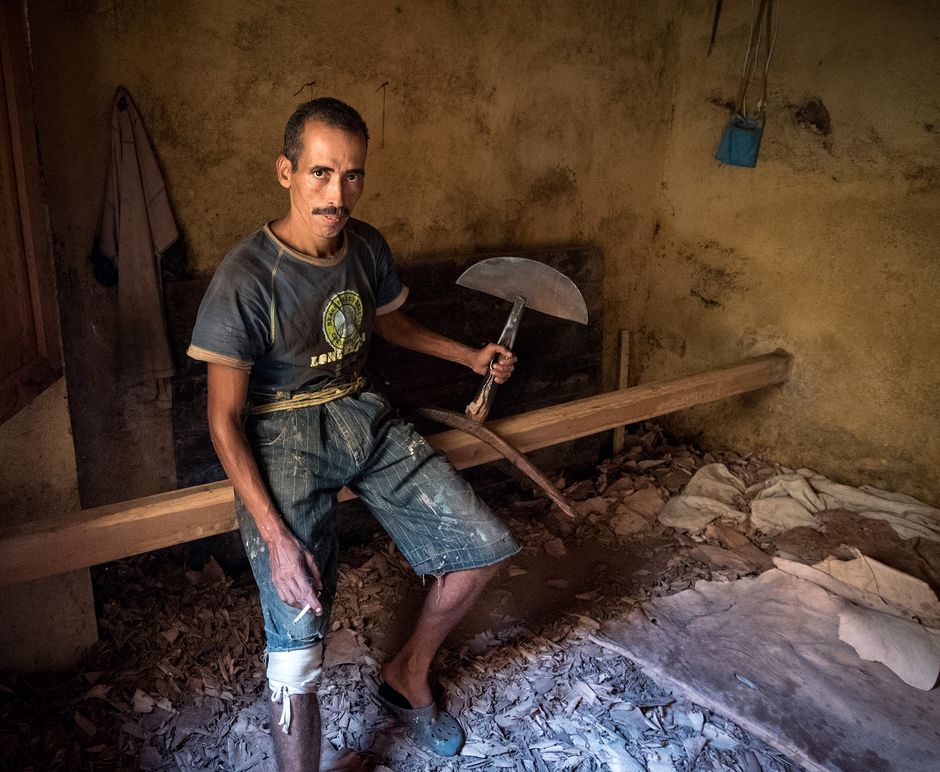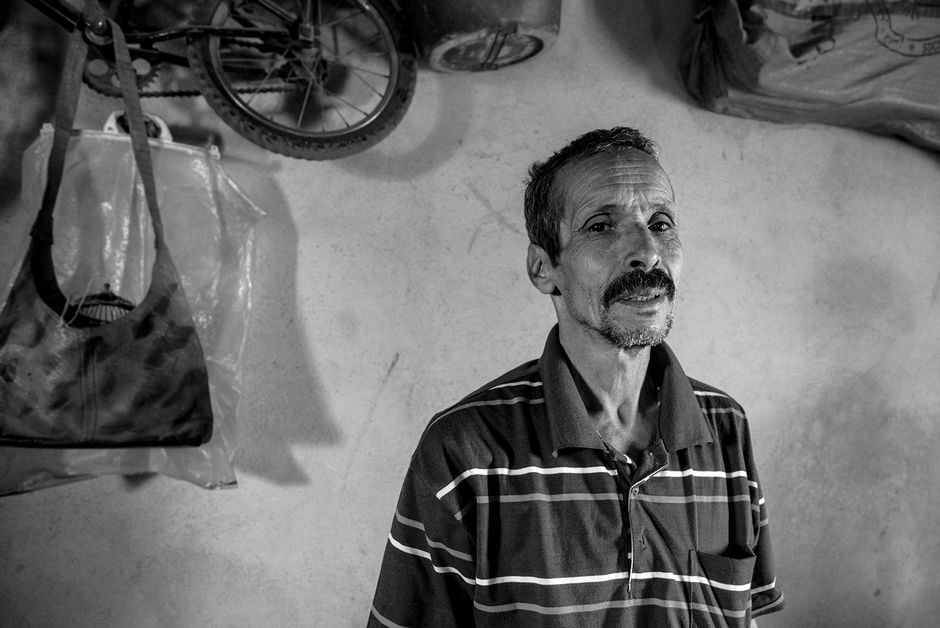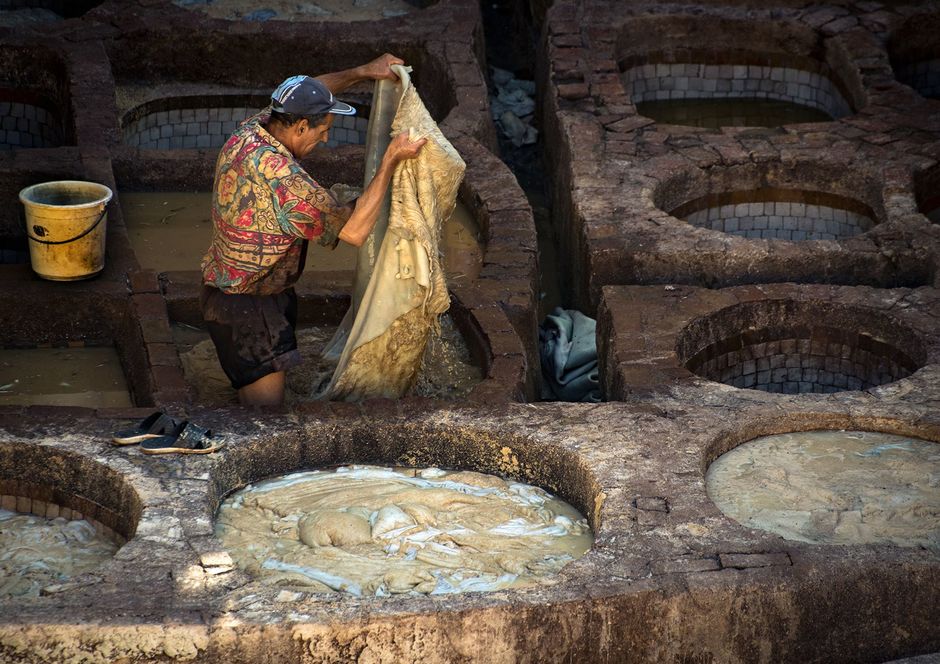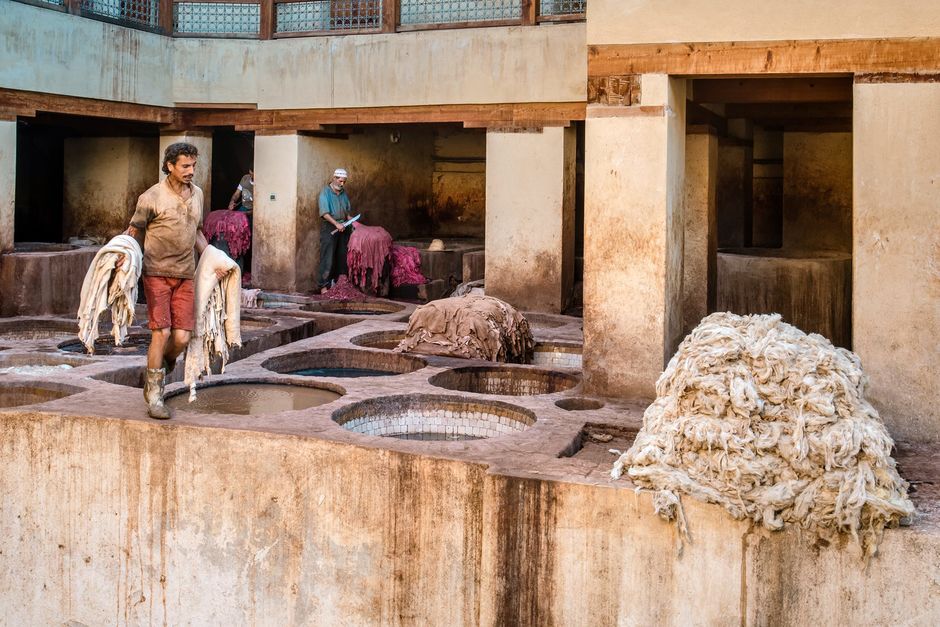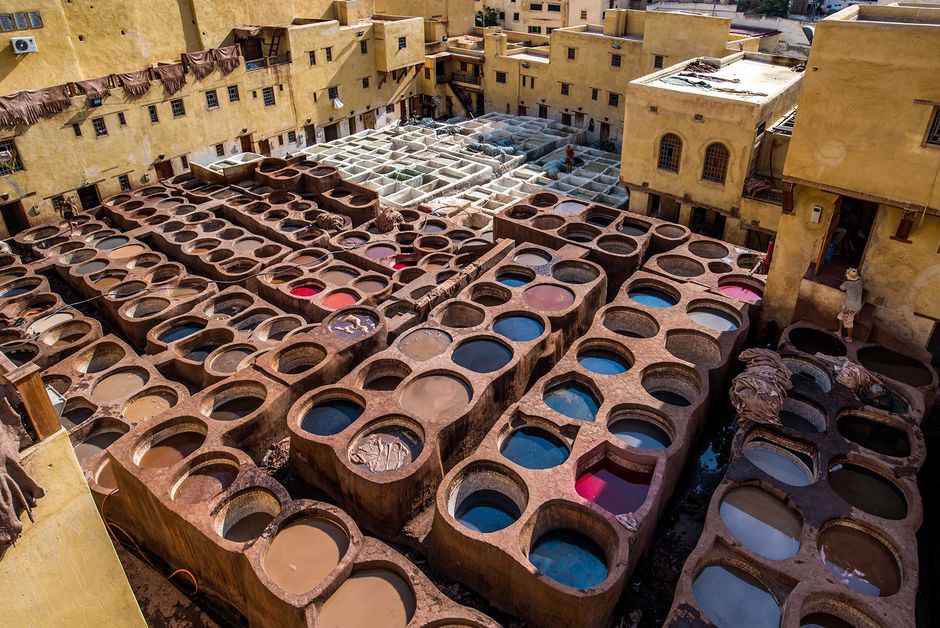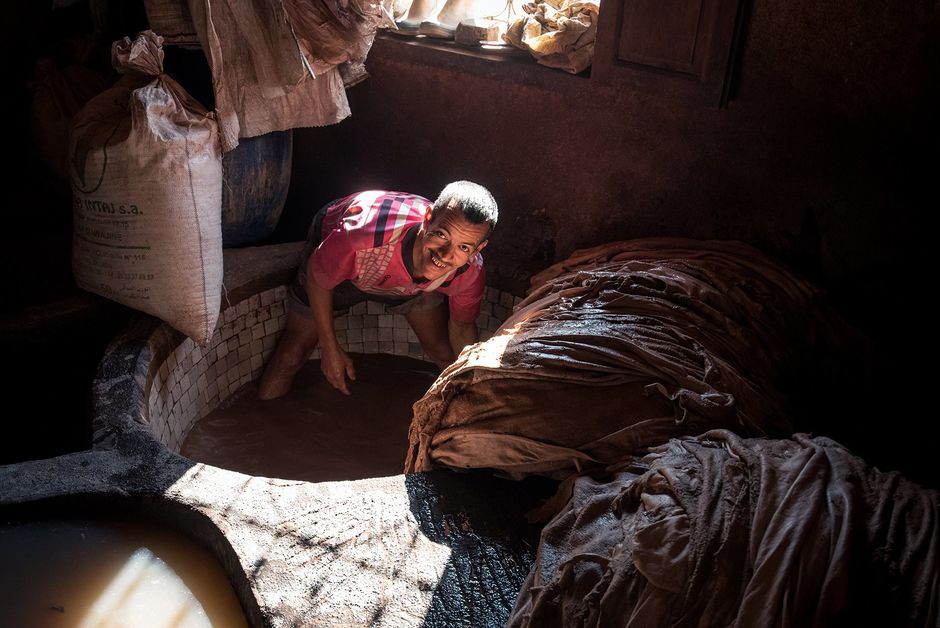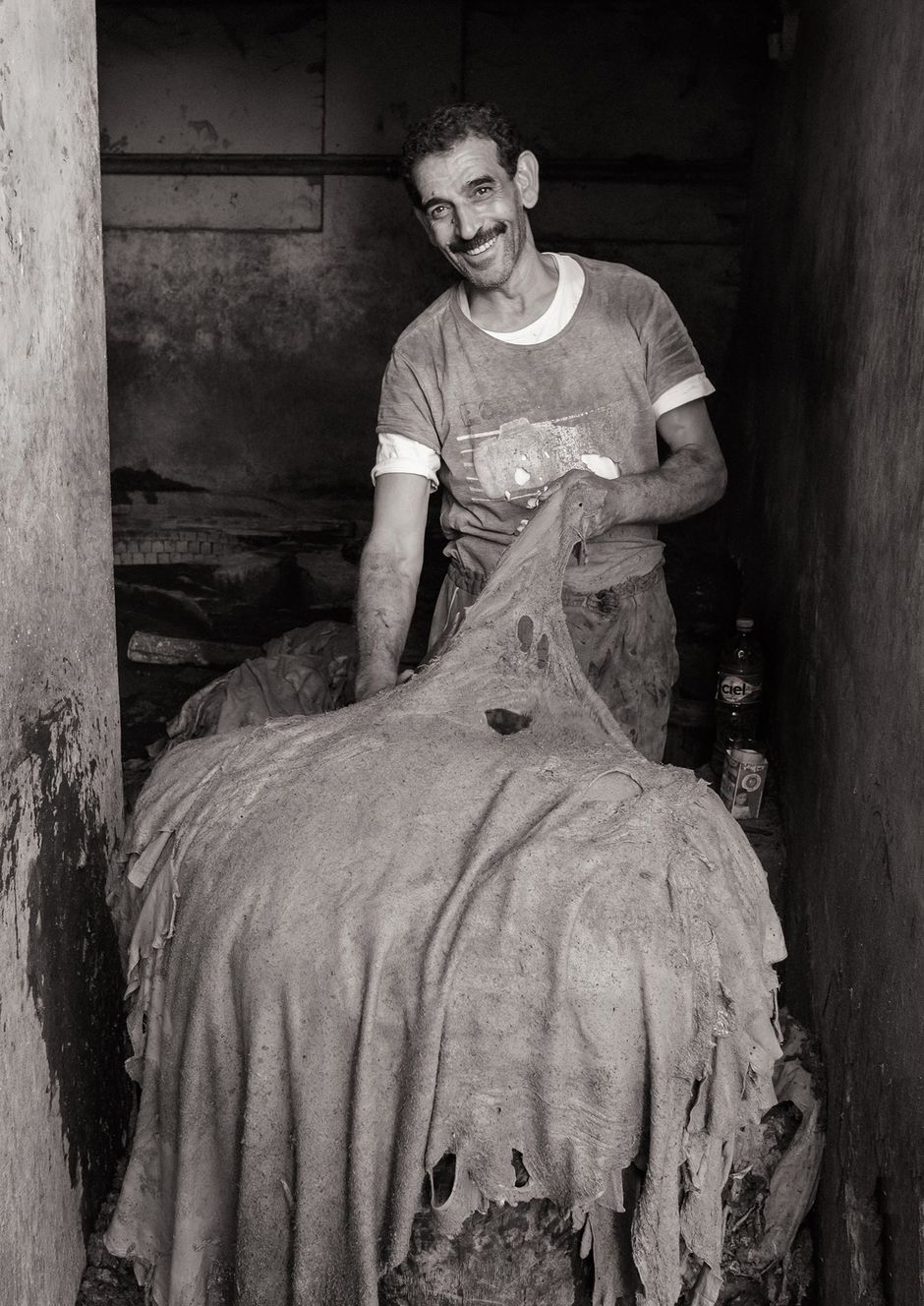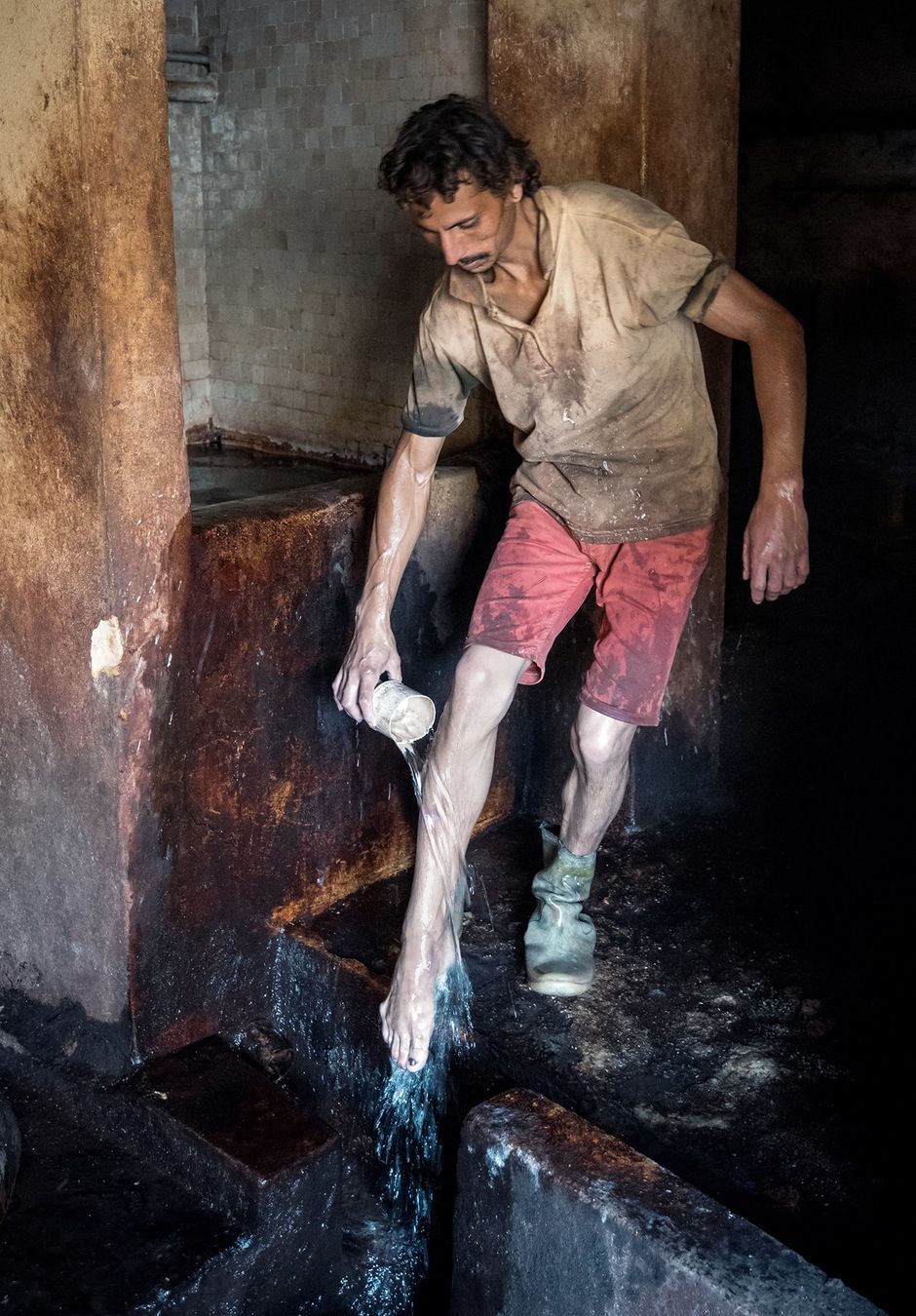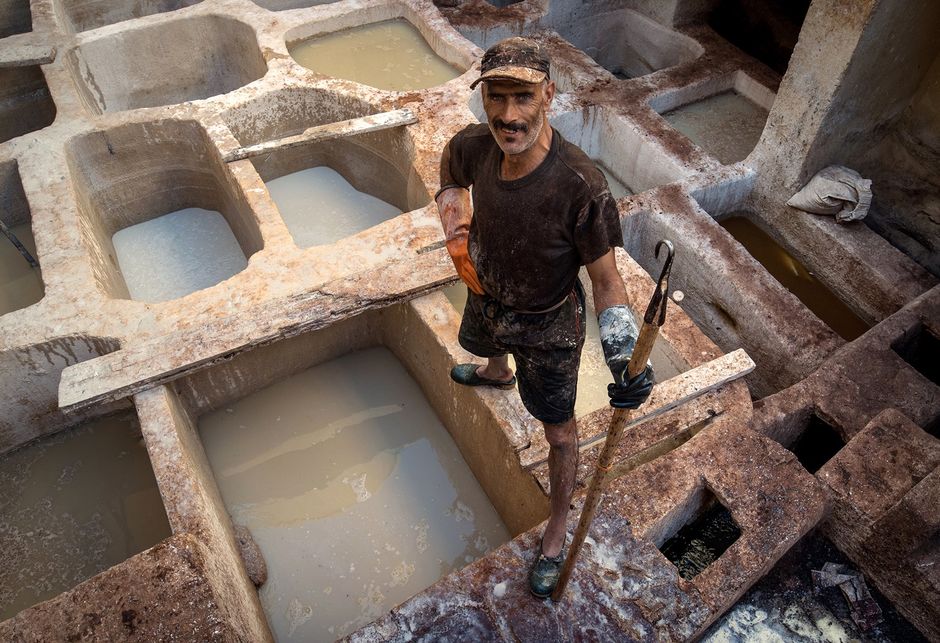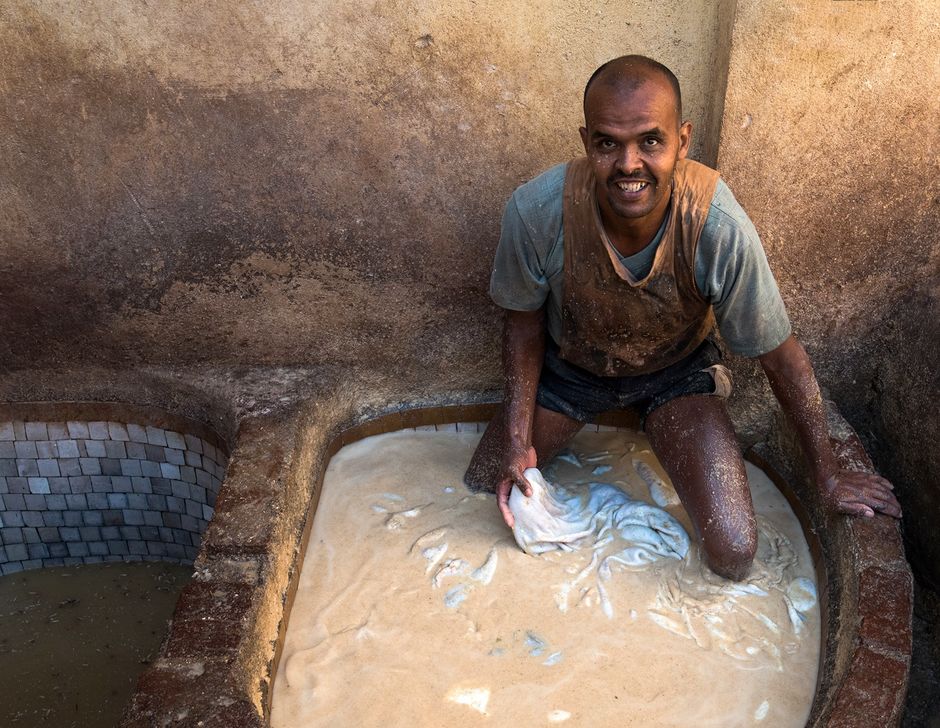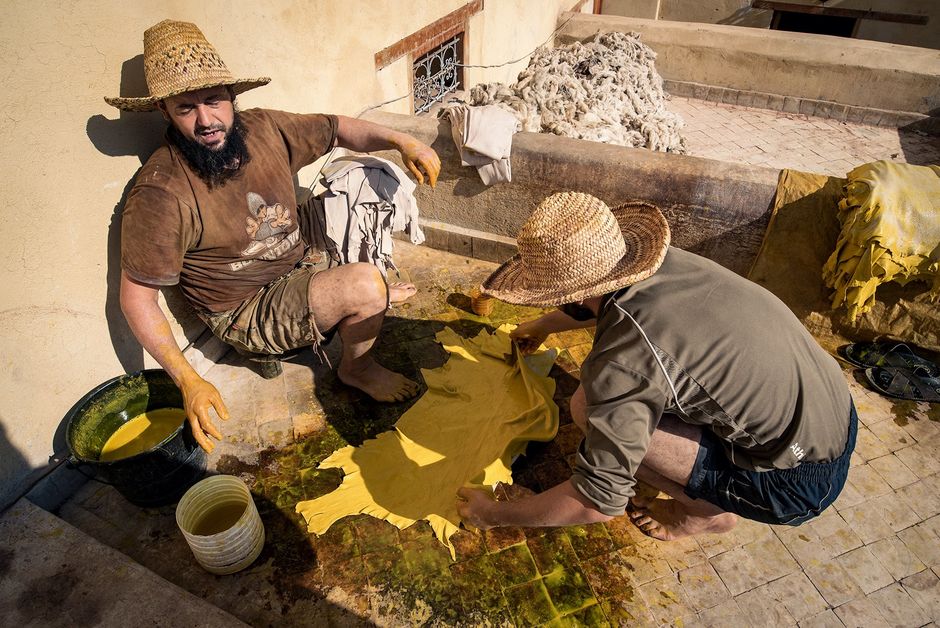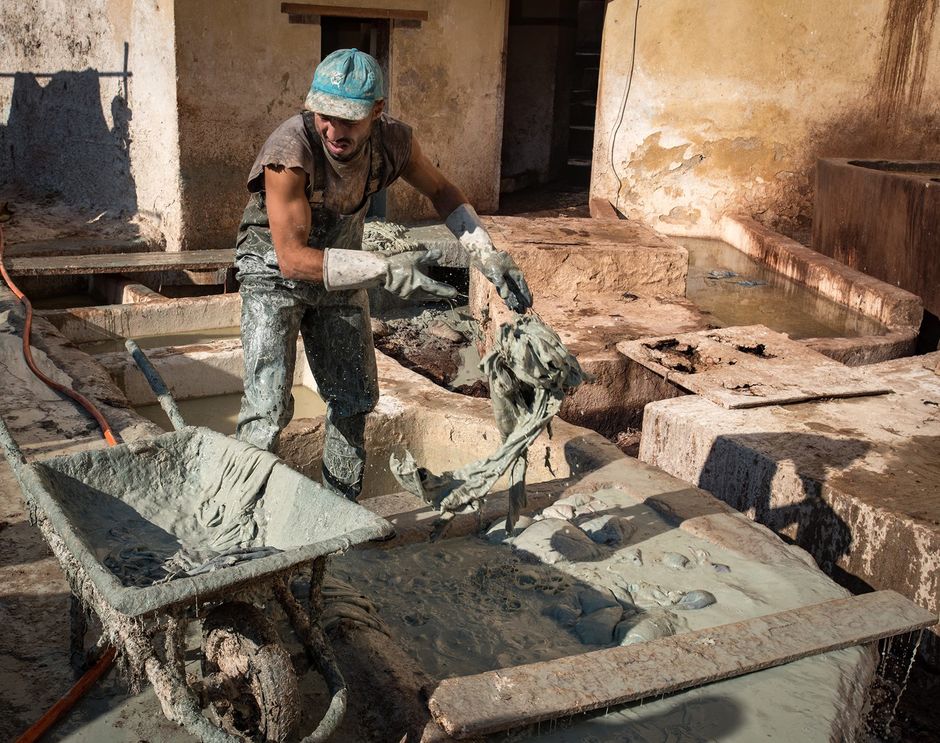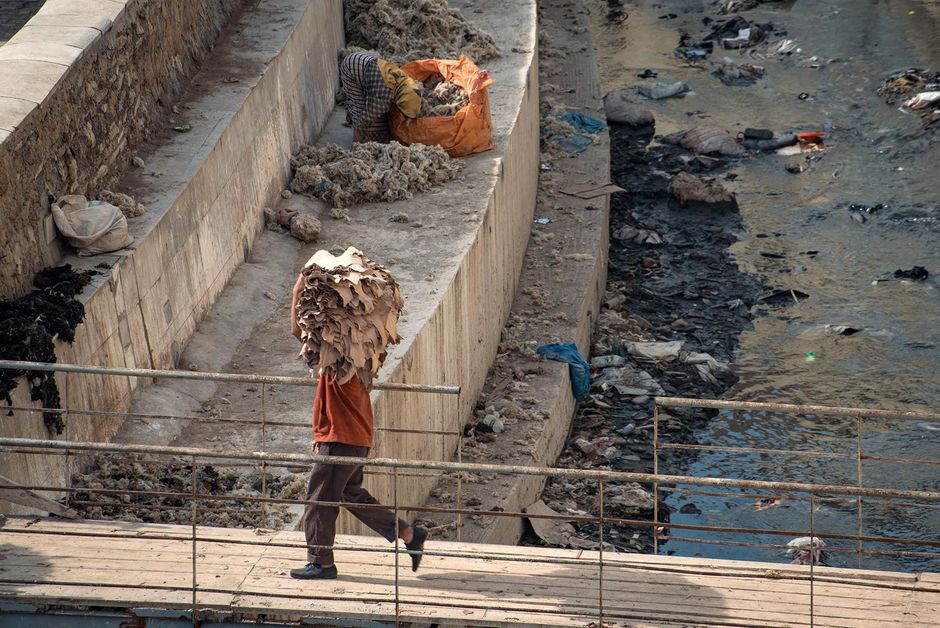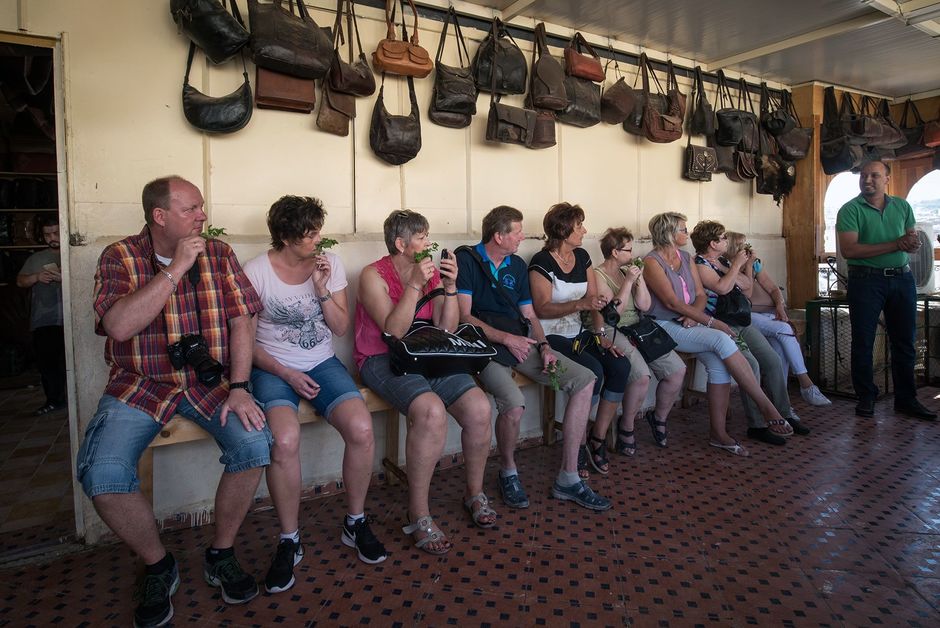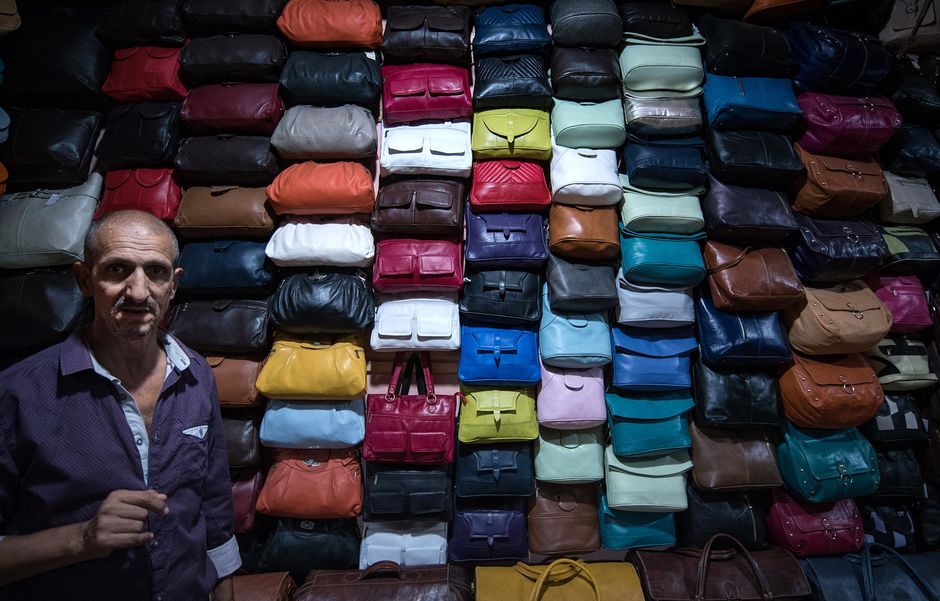The Tuesday morning sun spills over large stone walls into a courtyard of circular dye vats slowly illuminating them like giant pots of paint. Abdul strips down to his shorts and lowers himself into a fermenting cocktail of cold water, salt, and pigeon shit.
He drags in several animal hides and pushes them below the frothy surface with his bare feet. For the next three hours he'll knead the pelts in an ancient process that helps break down the skin so it more readily absorbs dye. It's another day at work in one of Morocco's most prominent tourist attractions.
In an adjacent room, Kadir uses his hands to submerge pelts in vats of cow urine, quicklime, salt, and water. This “biologically active” recipe dates back centuries and has been specifically concocted to remove residual fat and blood from skin. The wet hides are dried and passed onto workers who toil away with double handled knives scraping off any clinging pieces of flesh and hair.
Hundreds of men here continue to use ancient production methods to create leather goods for the tourist industry. Nestled within the serpentine streets of Fez, the Chouara facility has been operating since the 14th century and has now become one of the city's largest visitor draws.
In the viewing balcony the latest tour group are filed in for a grandstand view of the dye vats. The visitors are handed a sprig of mint to help mask the pungent stench of wet animal skin, tanning chemicals, and decaying flesh.
The sales pitch has begun. Leather salesmen will tell you how the men work ethical hours with eco-friendly dyes made from appealing sounding substances like saffron and indigo. It's "all natural" and the workers are in good health. "Some work until they're 80!" They'll insist you won't find anything cheaper or of higher quality in the rest of Morocco.
You'll be given all the time you need to take a selfie or six and render the ubiquitous snapshot of the pretty pots of dye. (If you google "Fez tannery" you'll find the same image repeated hundreds of times over.) Then it's off to the tannery shop to buy that exclusive yellow jacket. The sales team will explain how the pigment is the rarest and most expensive colour and unlike other dyes it has to be hand rubbed into the pelt by artisans.
But it's all bullshit. A deceptive marketing story that leverages the "romance" of rarified old world techniques to sell gaudy handbags, jackets, and shoes. The picturesque traditional leather works of Fez are an ecological and human atrocity.
Vegetable dyes were replaced with synthetic chemicals long ago, men work extended hours in abhorrent conditions, safety standards are non-existant, and the amount of toxic waste generated is staggering. Carcinogenic chromium, animal by-products, and other bio-hazards are regularly jettisoned into the city waterways.
Dyes lose their potency over time and need to be replaced, so every 25 days thousands of gallons of chemically-tainted effluent are dumped into the Sabou and Fez Rivers.
Ismail Aloui from the Agency for the Development and Rehabilitation of Fez says that "Chromium contaminates the city's food supply and sickens people. They suffer directly. It’s a health problem, daily problem."
An official at the water department in Fez, Mohammed Meziani, attempts to soften this reality by admitting "We know the chromium is poisonous. But it’s downstream. The water we drink is from upstream."
The truly insidious nature of the Chouara tannery lies in the fact that its toxic production chain exists today purely for the marketing of leather product to tourists.
In addition to the "traditional" tanneries there are over 50 modern facilities operating within the city of Fez. These tanneries employ high tech filtering systems that extract chromium and recycle water. Machines have long since replaced men kneading skin in toxic pots. Their business model relies on the efficient and cost effective processing of pelts which are then shipped to craftsmen across Morocco. They don't have onsite shops and are far removed from the tour bus circuit. There's no romantic allure in mechanized stainless steel.
Sooner or later Fez officials will need to address the impact the tourist tanneries are having on the water system, land, and health of the general population.
In doing so the operators of the Chouara tannery and its like will have to ask themselves a really dark question. Tourists come here expecting to see leather processed in the ways of the bad old days. If we remove the ecological and human exploitation from the production will our product lose its perceived old world charm with consumers? Will it impact retail sales?
Whether we like to admit it or not there's a small part of us that's fascinated by human suffering. From best selling true stories about football team cannibalism to the walking dead jumping the shark, the psychological motivations are deep and complex. However the point at which it becomes truly twisted is when the lives of Abdul, Kadir, and hundreds of others are marginalized as part of a sideshow to sell leather souvenirs to indifferent tourists.
Asylums with doors open wide,
Where people had paid to see inside,
For entertainment they watch his body twist
Behind his eyes he says, 'I still exist.'Joy Division, 'Atrocity Exhibition'
Not long after completing this photo series I unwittingly consumed trace amounts of tainted water from the medina adjacent to the tannery. I was bedridden for 48 hours and to pass the time I started flipping through the local television channels. I randomly stopped at a New York Fashion Gala segment where an attendee was being interviewed. Eventually the question came up:
"What does leather symbolise to you?"
After contemplating for a second they responded with:
"It's sexy and glamorous ... For me it represents nature and honesty"
=======
I want to thank the workers of Chouara who risked trouble with "management" by letting me document the internal workings of their tannery. They were extremely gracious allowing me photograph them in their workspace. In each case I took time to show them the photos I'd taken. It was very important they approved of their final image.
Clinton Logan spends part of each year travelling the world by motorcycle and recording what he sees and hears.
